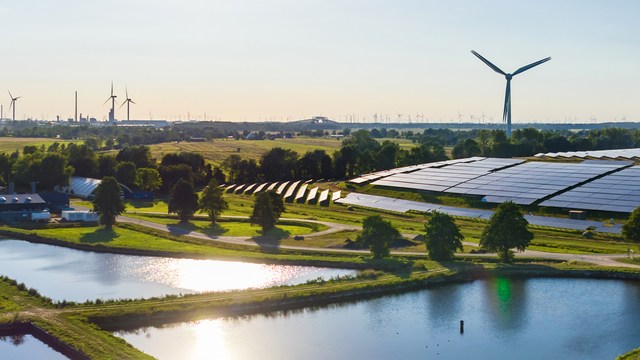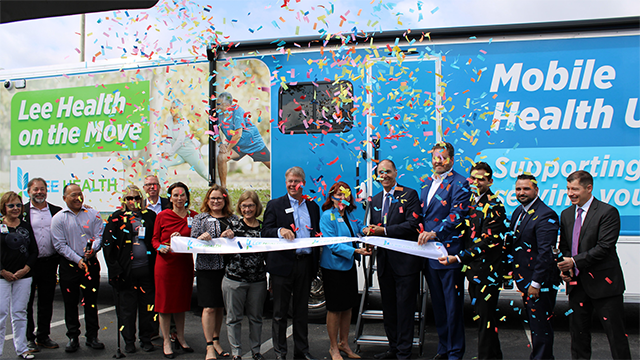The cyber and real worlds are profoundly linked in a connected community, which is why communities are developing their foundational digital infrastructure as a first step. In fact, Black & Veatch found that 34 percent of municipalities rated high-speed data networks as a top priority. With robust foundational infrastructure, the community can more effectively integrate connect-sense-and-respond capabilities into its framework, changing the very nature of its system.
These capabilities allow communities to reinvent their identity, shedding old status and stigma. Communities become redefined by their new states of functionality and create new community experiences for visitors and citizens. Even though innovation is underway, the potential of digital connections is still emerging, and citizen needs and desires continue to evolve. As civic leaders select projects and draw up plans, it's important that the digital networks they select can support current smart apps as well as those that evolve and converge over time.
The path and pace of digital transformation varies across communities, but Black & Veatch advises everyone to consider these foundational elements when planning their approach. A holistic planning approach to connected technologies will get each of these elements humming in sync. But, communities must kick start smart efforts now. Innovation waits for no one, and the digital technology ladder will only reach new heights.
1. Telecommunications Infrastructure
Wireless and fiber networks are the heartbeat of a connected community because they link the layers of physical devices and systems, data, and sensing to make a connected community possible. It's important to remember that digital apps have latency, bandwidth, coverage, resiliency and security requirements. As a result, communities need to plan and design their infrastructure to efficiently interconnect and integrate with its physical assets, like street lights, cameras, utility systems, and related apps.

Fiber
Fiber optics network and deep fiber deployment enables wireless technology and ensures a community can evolve toward the future. A Deloitte report stated that connected community innovation and related economic growth will be limited without deep fiber deployment because high-speed broadband, 5G, and wireless densification cannot be fully developed. Without these capabilities, cities will be unable to leverage IoT technologies and the digital divide in rural and underserved areas will widen.
Within the community network, fiber will also support fronthaul and backhaul from the edge of the network to the core. As communities start to deploy smart technologies, they may need to add fiber connectivity to get the desired functions and expected value. For example, an IoT security camera cannot send captured images to the cloud for real-time facial recognition processing without a robust internet connection, via a direct fiber link or wireless small cell connection, which is also enabled by fiber.
Wireless
Wi-Fi, 4G LTE, and 5G networks connect the mobile user and smart sensors to the community. Wi-Fi is an important amenity to visitors and citizens, and it can be leveraged to expand connected community apps. Because it provides last-mile connectivity, Wi-Fi helps bridge the digital divide by enabling services in low to medium income and underserved neighborhoods.
Many communities are upgrading to 4G LTE networks for faster wireless broadband speeds to support real-time voice, data, video, and photo capabilities. At the same time, carriers have started to roll out 5G to establish the “next gig thing,” which will allow digital apps and solutions to scale at faster rates than experienced today. 5G may seem far away, but it is expected that 5G subscriptions will begin to lead the market as soon as 2022, while LTE growth declines, according to 5G Americas.
However, these two evolutions will co-exist to benefit both networks: 5G will share 4G’s extensive coverage, available spectrum, and existing infrastructure, and 4G networks will leverage 5G technologies to provide better service. While it is reasonable for industries to operate their 4G LTE system until they reach their return-on-investment, they must consider 5G when making 4G modifications to protect investments and ensure an efficient transition to 5G.
Community permitting policies are linchpins of infrastructure deployment needed to expand 4G and roll out 5G. These networks require extensive work involving rights-of-way, poles, ducts, and neighborhoods to deploy antennae, small cells, and other technologies to densify the networks. Communities that ease permitting and site access to enable technology deployment may see big dividends—a city the size of Chicago could see 90,000 new jobs and a $14 billion economic boost related to 5G technology enablement. Accenture estimated that even a small city like Saratoga, CA, could see 300 new jobs and a $50 million boost. Knowing this, many communities have already started to evaluate their policies to encourage network technology deployment, and these states will be the first to see significant economic and consumer benefits.
2. Smart Sensors
Recent LTE and 5G advances and standards have lowered the cost and energy needed to integrate many types of sensors in a community. It takes many diverse types of sensors, like fixed, human, and remote sensors, connected by a network to adequately support smart management. A connected community includes many sensor nodes, so communities need to understand the energy demand of sensors, as well as data ownership and privacy, especially if the sensors collect personally identifiable information.
The purpose of sensors is to gather data about the community to make accurate decisions in real- time for responsive and effective management. For this reason, the location of the sensor is critical. Many communities are including spatial data with their sensors via a GIS interface to capture critical locational information. For example, a sensor that indicates flooding is only useful if the location of the flooding is also conveyed.
3. Data Science and Analytics
 How a city collects, shares, and uses data is a critical consideration. Communities that build a culture of transparency will have an easier time knocking down department silos and creating open data policies, which are essential to adopt data-sharing platforms and the technologies they enable. But, be prepared—connected communities produce a lot of data. To keep from being overwhelmed, cities need to consider big data architecture and interoperability alongside telecommunications. This will help them organize data sources, ensure systems work together, sync with an analytic process, and inform data monetization. It’s helpful to manage and govern data as a core component of operational systems and to prioritize data integration and processing through a network operations center.
How a city collects, shares, and uses data is a critical consideration. Communities that build a culture of transparency will have an easier time knocking down department silos and creating open data policies, which are essential to adopt data-sharing platforms and the technologies they enable. But, be prepared—connected communities produce a lot of data. To keep from being overwhelmed, cities need to consider big data architecture and interoperability alongside telecommunications. This will help them organize data sources, ensure systems work together, sync with an analytic process, and inform data monetization. It’s helpful to manage and govern data as a core component of operational systems and to prioritize data integration and processing through a network operations center.
Analytics platforms that offer dual functions can be valuable. Some platforms merge seamlessly with project management tools to collect, organize, and manage applications and end users during technology deployment. For example, Atonix Digital™ Program Management, powered by ASSET360®, a cloud-based analytics program, performs life-cycle optimization and data-driven decision-making after deployment.
4. Cybersecurity
With multiple points of entry, a digital system is at heightened risk for cyberattack. This explains why cybersecurity is the top priority of Chief Innovation Officers across U.S. cities, prompting 60 percent of cities to obtain cyberinsurance, according to a study from Center for Digital Government and Government Technology.
Fortunately, digital platforms can be designed to establish cybersecurity protections and standards across the system, which means security is embedded within apps and interconnected devices to protect data as it is transferred across connected systems.
As communications systems evolve, leaders must adopt responsible cybersecurity measures that are flexible and scalable to grow with a community. A smart way to start is to conduct cyber-asset inventories. By quantifying risk, cities can prioritize and justify investments in cyber- protection and establish protections and protocols to protect community and citizen information.








